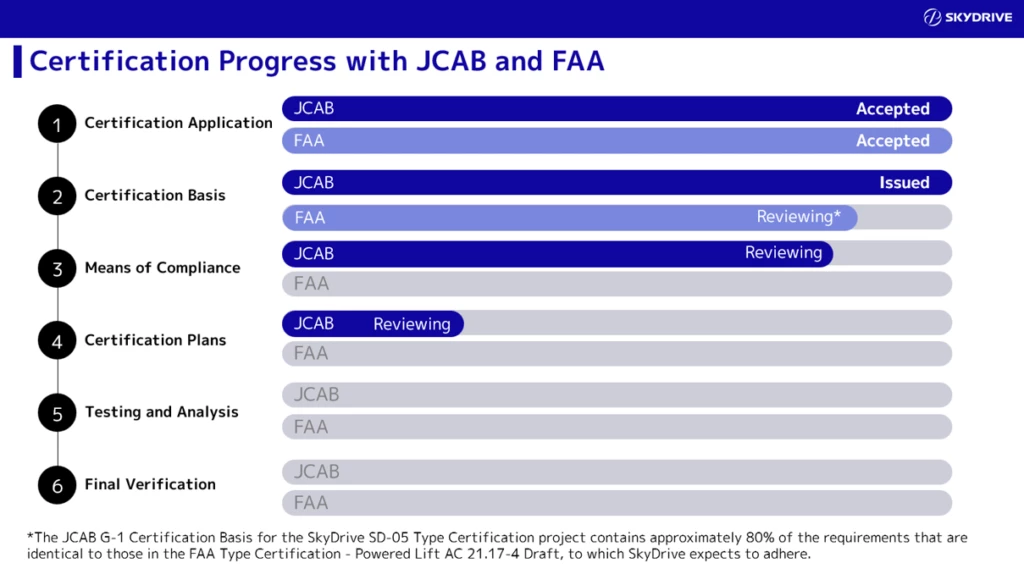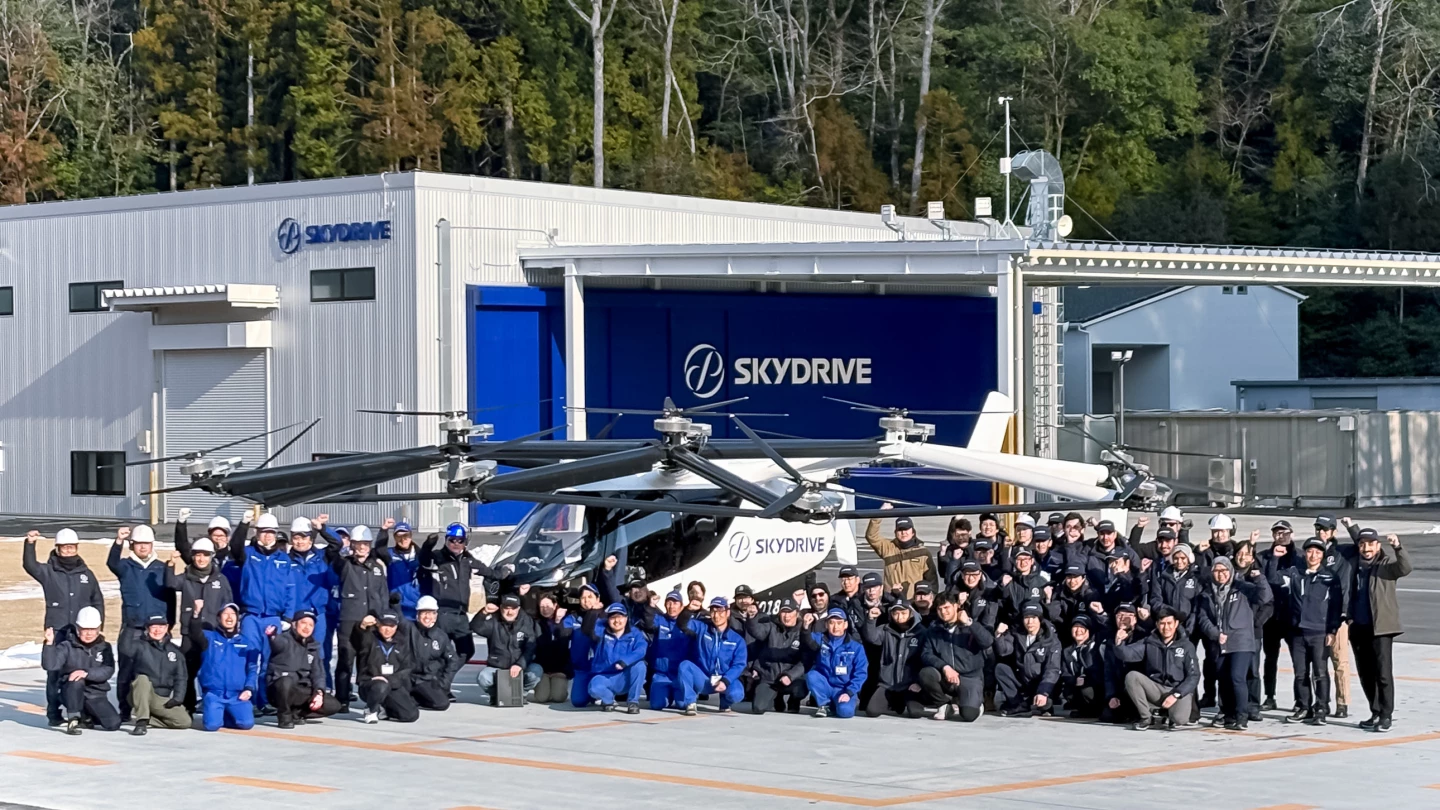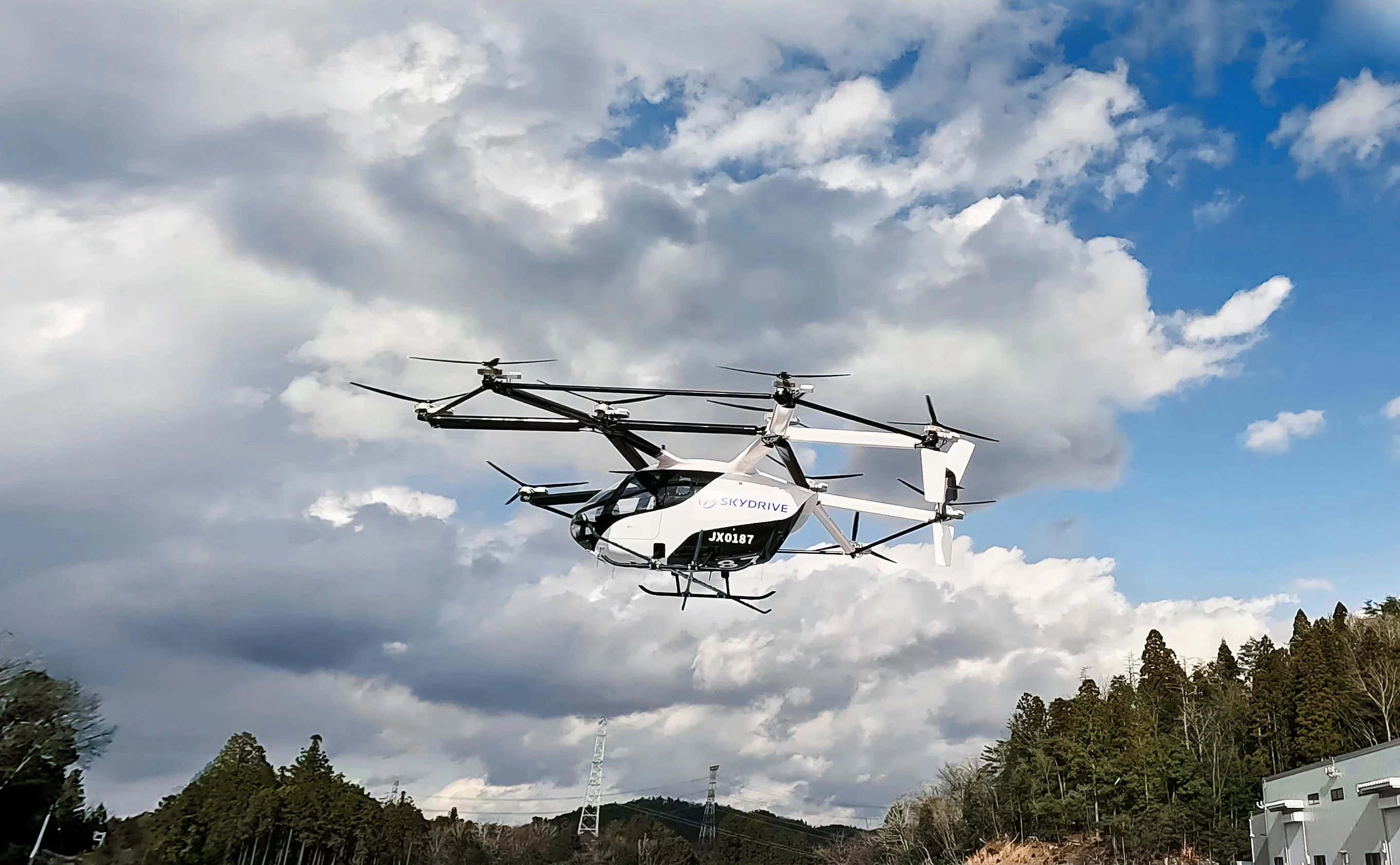SkyDrive has long taken a leadership role in Japan's nascent eVTOL industry with sights on eventually making its flying cars as ubiquitous as automobiles. With time winding down on its long-time goal of unveiling its first production-bound multirotor electric aircraft to the world at this year's World Expo Osaka, the company has released the first photos of its vessel after taking the next step toward type certification.
Headquartered in Toyota, Japan, with early links back to the global automaker of the same name, SkyDrive has been a pioneer in Japan's eVTOL industry. Its "Skydrive2020" website reads a little out of date today, indicating its initial plans for 2020 Tokyo Olympics demo flights, but the company has continued making major strides and knocking off milestones each step of the way.
While the 2020 Olympics got pushed back to 2021, SkyDrive was still able to complete its first public demonstration flight in August 2020, following what it called the first manned multirotor flight in Japan in late 2019. Last year, it got the production lines for its reworked SD-05 eVTOL up and running in cooperation with manufacturing partner Suzuki.
Now, SkyDrive has announced that the Japan Civil Aviation Bureau (JCAB) has issued the company a G-1 certification basis for the three-seat SD-05, which it will call simply "Skydrive" moving forward. An essential step toward type certification and commercialization, the G-1 is effectively an agreement between SkyDrive and the JCAB as to the specific airworthiness and performance criteria that will be required for certification.
"The road to aircraft certification is broad and complex, particularly for new aircraft such as eVTOLs, where existing regulations are still under development and no standardized certification basis is available to anchor the process," SkyDrive explains. "This additional agreement now provides further clarity and direction."

As shown in the graphic above, the G-1 certification basis is the second step in the intensive certification process, following acceptance of the original application. SkyDrive has also had its application accepted by the FAA but has yet to be issued a certification basis by the US aviation authority. It is aligning its certification work in both Japan and the US to help expedite its path to globalized operations.
In Japan, SkyDrive's next step will be to work closely with the JCAB toward developing a comprehensive certification plan, complete with a testing schedule and procedures. After that plan is finalized, the builder will commence ground and air testing ahead of final verification.
As those remaining steps show, the G-1 certification basis issuance is still a far ways from putting Skydrive eVTOLs into operation across the skies, but it is another step toward SkyDrive's bigger goal, the deadline for which is fast-approaching. The World Expo in Osaka begins this April and runs until October. Here, SkyDrive will host the official world debut of the Skydrive aircraft and its first public demonstrations.

In anticipation of that debut, SkyDrive accompanied this week's certification update with the first official photos of the Skydrive/SD-05, which had previously been shown only in rendered form.
Plans call for the 37.7-foot-long (11.5-m) Skydrive to be powered by 12 electric rotors surrounding a cockpit with front pilot seat and two rear passenger seats. The 3,100-lb (1,400-kg) battery-powered craft will ultimately be capable of trips between 9 and 25 miles (15 and 40 km) on a full charge and speeds up to 62 mph (100 km/h). SkyDrive aims to offer a lighter, simpler and quieter alternative to the helicopters of today.
SkyDrive's ultimate vision is to make eVTOLs an everyday part of city life. With the launch of the first and successor Skydrive models, the company hopes to mold a future in which everyone has access to eVTOLs for daily transportation, both in Japan and across the world.
Source: SkyDrive





